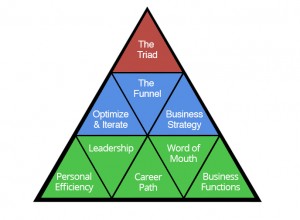The future is unknowable, which is why there is so much merit in the scouting motto coined by English soldier Robert Baden-Powell: Be prepared. He believed that one must “always be in a state of readiness.” Organizations invest in strategic planning initiatives as a way to peer into and be prepared for the future – to decide on an outcome or set of outcomes to pursue and the corresponding course(s) of action. Where does your strategy come from? How do you create one? One of the best methods to anticipate the future and formulate a strategy is asking the question “What if?”

It’s up to you to decide what winning looks like, and the more specific you can be about your version of winning, the better.
While we encourage solid strategic planning work, not every company will make the time or invest in the process. Every company, however, can carve out time to engage in the “What if?” method – a relatively simple but powerful process to explore potential upside and downside possibilities.
How to Put “What If?” Into Play
We have found that this works well in small groups and can be an excellent precursor to a more structured strategy development process, but it can be used by individuals as well. Here’s how it works:
- Identify the members of the group and set aside 30 minutes for each brainstorming session.
- Create an initial list of What Ifs to bring to the table. You might consider your company’s past success and how to continue it. Stuck or not sure where to start? See the list of What If questions below to prime your thinking.
- Establish the criteria for how you will prioritize your What If questions before the meeting. Sample criteria include impact on customers, most likely to occur, time to fix, cost to fix, etc.
- Solicit additional What If questions from the group.
- Make a list of all the questions and prioritize them using the criteria.
- Establish action teams – that is, divide the group into smaller groups who will do the leg work to address each question. This work often requires data derived from research. Teams may examine the current situation in order to identify what can be done to take advantage of or to avoid the What If.
- Reconvene and use the homework to decide which questions to pursue and formulate a strategy based on the options. When deciding which questions to pursue, think about where you deliver the most value and where you make your money, which customers have which problems, and so on. A key aspect of strategy is choosing which initiatives to pursue as well as which ones to forgo.
- Determine what it will take to execute the strategy and develop a plan. Use this step to identify the implications of your choices and any constraints your organization will face in being able to execute the plan.

Asking “What If” is one method for anticipating and preparing for the future.
Get the Conversation Started with these What Ifs
When you craft your questions, always start with “What If…” Here are 12 questions we often employ that you can use to start your thinking process:
- What if ________ happens in the global economy?
- What if ________ legislation is enacted?
- What if ________ customer defects?
- What if ______ happens to our customers?
- What if we do or don’t _______ (grow/enter/leave) in a market?
- What if the demand for _______ (product/service) exceeds supply?
- What if we lose______ (supplier(s)/partner(s))?
- What if a competitor does ______________?
- What if ________ technology emerges or doesn’t emerge?
- What if we do or don’t make ____________ investment in ___?
- What if our customers/the market adopt(s)/choose(s) ____________?
- What if we drop the ball/miss _____________?
Forming a Strategy – What Comes After What If?
In the words of Sun Tzu “Strategy without tactics is the slowest route to victory. Tactics without strategy is the noise before defeat.” Good strategies create a path for action. A strategy without a plan of action is inherently incomplete. Once you determine your strategy, the next step is to develop a plan to bring it to life.

Keep in mind that the essence of strategy is thinking about how you are going to win.
Keep in mind that the essence of strategy is thinking about how you are going to win. Winning requires identifying what would have to stay the same and what would have to change. It also requires knowing how and why you need to do something and what resources are required. Most importantly, it takes a thorough understanding of the problem your customers are trying to solve and how and why your competitors make money solving this problem. Strategies that are directly linked to solving a problem have the best chance of performing.
It’s up to you to decide what winning looks like, and the more specific you can be about your version of winning, the better. Identify tangible, measurable outcomes that are connected to the long-term desired business outcomes. Whether or not you use the “What If?” method, take the time to be thoughtful in your strategy development efforts.
Business & Finance Articles on Business 2 Community
(35)
Report Post






